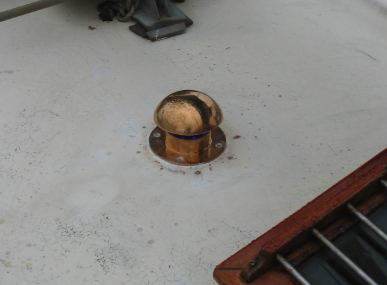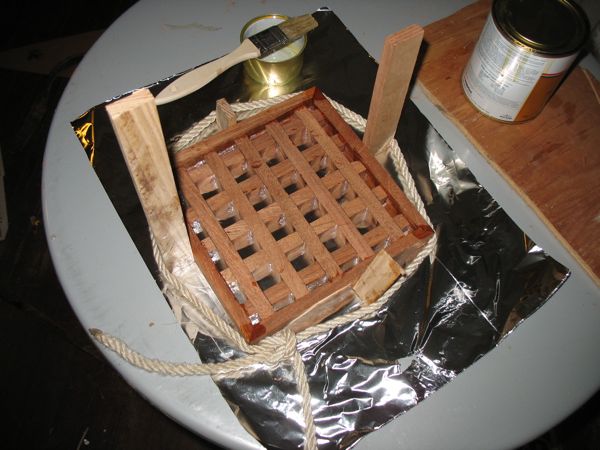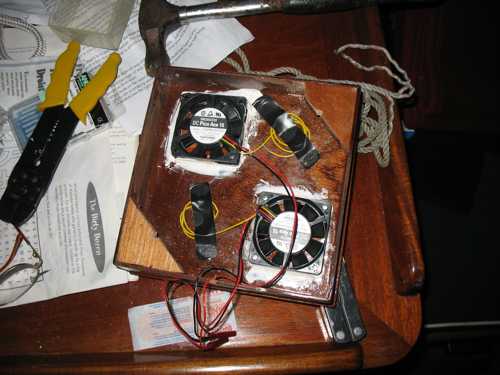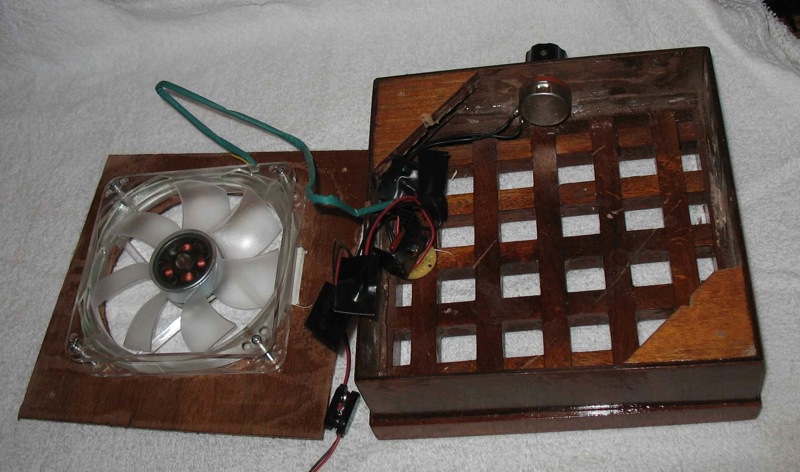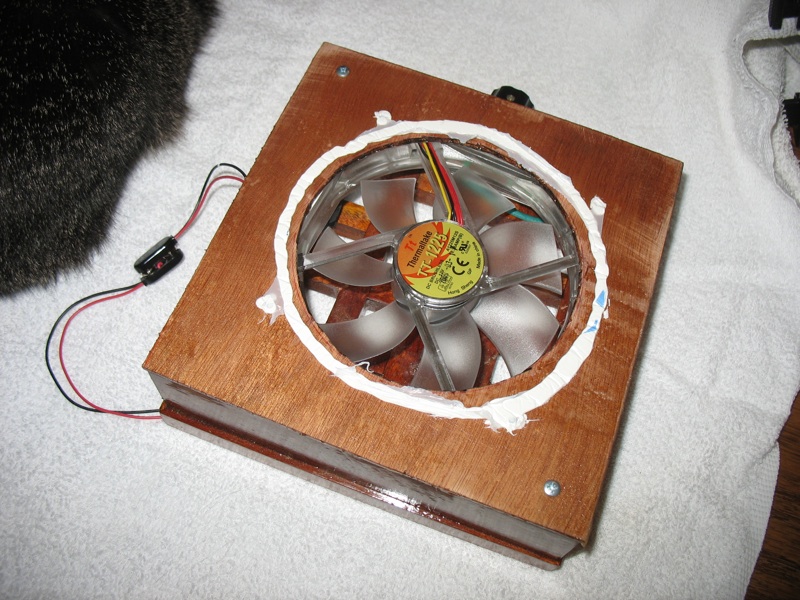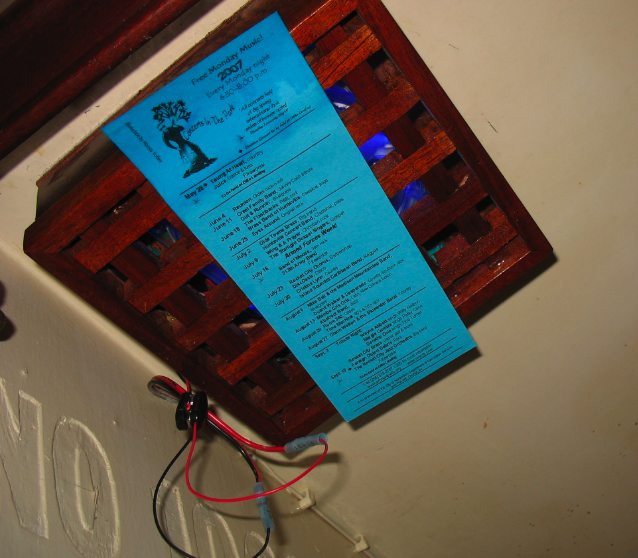In June of 2002 I noticed that the overhead was turning black with mold. I quickly came up with a solution - a Solar Nicro vent. This doesn't use any battery power but runs day and night to circulate air and keep the boat dry. I had installed it over the main cabin. I thought that would be the end of the story here.
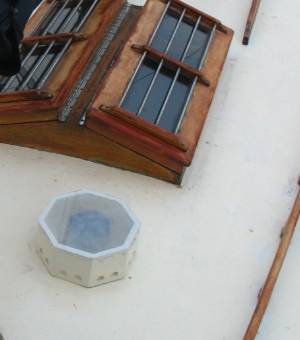
As time passed though I noticed it tended to leak a little bit when it rained. Another problem was the fact that the head often smelled bad. When I added the battery charging solar panel I had to move the vent. I moved it to the head. To fix the leak problem I built the guts of the fan into an octagonal enclosure that allowed it to work. It had holes in the side to allow air out and a translucent cover to allow sunlight in.
The vent fan used a little ni-cad battery that charged during the day and then ran the fan overnight or on cloudy days. The problem was that after two or more consecutive cloudy days the battery ran low and the fan stopped working. If the battery wasn't new it held even less charge. Don't get me wrong - the Nicro Vent is a quality product - I just didn't like the way it looked on my boat.
Later I moved the boat to a new slip. But that created a problem. If I put the boat bow in this vent was blocked from sunlight. The diffuse light available in the shadows wasn't sufficient to keep it running. If I backed the boat stern first in the slip it worked fine but the battery charging solar panel was partially blocked. That worked but just barely.
A solution seemed to be to somehow hook up the vent motor to the battery system and use the main solar panel to power it. Then it would run all the time regardless of the number of cloudy days. The problem with this was that the solar panel was 12 volts but the motor ran on 1.5 volts. I thought about stepping down the 12 volts to 1.5 volts with an LM317 voltage regulator. The problem here is that this is a so called linear regulator. It steps the voltage down by using what is in essense a resistive voltage divider. It dissipates most of the power as heat. In this case about 88% of the power would be lost. Also what if the regulator failed and passed the full 12 volts to the fan? So I moved past this solution without even implementing it.

